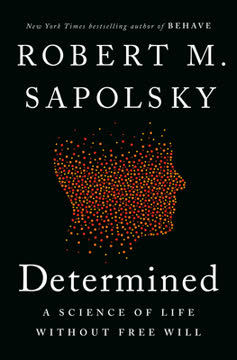重点摘要
1. 呼吸正念:通向当下觉知的门户
“禅修者总是正念地吸气,正念地呼气。”
呼吸作为锚点。 呼吸正念是佛教禅修实践的基础。它作为一个恒定、始终存在的锚点,将我们带回当下。通过专注于呼吸,我们培养了一种不加评判的觉知,摆脱了对过去遗憾或未来焦虑的干扰。
实际应用。 练习呼吸正念的方法:
- 找一个舒适的坐姿
- 将注意力集中在呼吸的感觉上
- 注意吸气和呼气,不要试图控制它们
- 当你的思绪飘散时,轻轻地将注意力带回到呼吸上
- 从短时间的练习开始(5-10分钟),逐渐增加时长
这个简单而深刻的练习有助于培养专注力、平静和对我们心灵与体验本质的洞察。
2. 四念处:身、受、心、法
“毫无疑问,呼吸正在进行。你能看到没有任何地方可以找到呼吸者吗?身体是空的,呼吸是空的,你也是空的。”
全面的觉知。 四念处提供了一种系统的方法来发展对我们整个体验的觉知。它们包括:
- 身:身体的感觉和姿势
- 受:愉快、不愉快或中性的体验
- 心:心理状态和思维模式
- 法:现实的基本模式和法则
深化洞察。 通过系统地观察这些体验的方面,我们对自己和现实的本质有了更全面的理解。这种练习帮助我们:
- 认识到所有现象的无常
- 减少对暂时状态的认同
- 在面对变化的体验时培养平等心
- 获得对万物相互关联的洞察
3. 无常:解脱苦难的关键
“在任何情况下都不要将任何事物视为‘我’或‘我的’。”
现实的本质。 无常(anicca)是所有现象的基本特征。所有产生的事物都必须消逝。这包括我们的思想、感受、身体感觉,甚至我们的自我意识。
通过理解获得解脱。 认识到无常可以导致:
- 减少对暂时状态和体验的执着
- 更加接受变化和失去
- 增强活在当下的能力
- 从对本质上是短暂的事物的执着中解脱出来
通过深刻理解和接受无常,我们即使在生活不断变化和挑战中也能找到平静和解脱。
4. 通过禅修培养专注和洞察
“在压力时期,专注成为真正的朋友。”
止与观。 佛教禅修包括两种互补的实践:
- 止(samatha):培养单一指向的专注和心理稳定
- 观(vipassana):培养对现实本质的清晰洞察
平衡的练习。 专注和洞察对精神成长都是必不可少的:
- 专注提供了深刻洞察所需的心理稳定
- 洞察引导我们的理解,防止对幸福状态的执着
- 这两种练习相互强化,带来更大的智慧与平和
定期的禅修练习,结合止和观的技巧,逐渐改变我们对体验的关系,带来深刻的个人成长。
5. 将正念融入日常生活
“练习不仅仅是坐着,与找时间无关。练习是为了你生活的每一刻。”
超越坐垫。 真正的正念练习超越了正式的禅修时间。它涉及将觉知和存在感带入我们日常生活的各个方面。
实际整合:
- 利用日常活动(如洗碗、走路、吃饭)作为正念的机会
- 在一天中加入简短的“正念休息”
- 在人际关系中练习正念沟通和倾听
- 将觉知带入日常任务和过渡中
- 将挑战和困难视为练习的机会
通过将正念融入我们的日常生活,我们培养了一种持续的觉知,改变了我们整个生活体验。
6. 静默在精神修行中的力量
“静默是自我不存在的地方。”
超越言语和思想。 静默是精神修行的基本方面,提供了一种超越语言和概念思维的体验维度。
培养内在的静默:
- 减少外部刺激和信息输入
- 在静修期间练习高贵的静默
- 培养对独处和静止的舒适感
- 发展观察思想而不参与的能力
- 探索思想和感觉之间的空间
静默为更深的洞察和精神成长提供了肥沃的土壤。它让我们能够接触到常被心灵喋喋不休所掩盖的意识维度。
7. 放下:通向真正自由的道路
“欲望中没有平静或喜悦,但在其缺乏中有很多。”
苦难的根源。 对体验、物品或观念的执着和依恋是人类苦难的主要原因。这包括对愉快体验的执着和对不愉快体验的厌恶。
放下的练习:
- 认识到所有现象的无常
- 不加评判地观察执着和厌恶
- 对所有体验培养平等心
- 练习不与思想和情感认同
- 培养对放下过程的信任
通过学习放下我们的执着,我们发现了一种深刻的自由和平静。这并不意味着变得冷漠或脱离,而是发展一种智慧和慈悲的关系,与生活不断变化的流动。
最后更新日期:
FAQ
What's Breath by Breath about?
- Insight Meditation Focus: Breath by Breath by Larry Rosenberg is a guide to insight meditation, emphasizing mindfulness through breath awareness based on the Anapanasati Sutra.
- Accessible for All Levels: The book is designed for both beginners and advanced practitioners, making complex meditation concepts accessible.
- Integration of Mindfulness: It illustrates how mindfulness can be integrated into daily life, encouraging awareness in every moment.
Why should I read Breath by Breath?
- Clear and Practical Guidance: Offers clear instructions and practical advice on practicing insight meditation effectively.
- Timeless Wisdom: Presents the Buddha's teachings in a contemporary context, relevant for modern readers seeking peace and clarity.
- Personal Growth: Helps develop a deeper understanding of the mind and emotions, fostering a more mindful and fulfilling life.
What are the key takeaways of Breath by Breath?
- Mindfulness of Breathing: Emphasizes breath awareness as a tool for cultivating mindfulness and insight, leading to tranquility and understanding.
- Understanding Feelings and Emotions: Highlights the need to recognize and understand feelings to avoid suffering.
- Impermanence and Non-Attachment: Stresses the importance of understanding impermanence and not clinging to experiences.
What is the Anapanasati Sutra, and why is it important in Breath by Breath?
- Buddha's Teaching on Breathing: A foundational Buddhist text outlining mindfulness of breathing, serving as a guide for meditation.
- Framework for Meditation: Provides a structured approach with sixteen contemplations to develop mindfulness and insight.
- Timeless Relevance: Its teachings are applicable to modern life, making it vital for meditation and personal growth.
How does Breath by Breath help with daily life?
- Integration of Practice: Emphasizes that meditation should be integrated into daily activities, enhancing overall well-being.
- Awareness of Thoughts and Feelings: Teaches awareness of thoughts and feelings, allowing for conscious responses rather than automatic reactions.
- Cultivating Compassion and Understanding: Encourages developing compassion for oneself and others, improving relationships and harmony.
What are the best quotes from Breath by Breath and what do they mean?
- “The richness lies right beneath our noses in any and every moment.”: Highlights the importance of being present and aware of life's richness.
- “You don’t solve your problems in this practice, you dissolve them.”: Emphasizes understanding and letting go of attachments that create suffering.
- “Keep it simple, and stick to the present moment.”: Encourages focusing on the simplicity of the present, avoiding past regrets or future anxieties.
How does Breath by Breath address the challenges of meditation?
- Acknowledgment of Struggles: Discusses common challenges like restlessness and distraction, providing strategies to navigate them.
- Encouragement to Persist: Encourages persistence in practice despite challenges, as growth often comes from facing discomfort.
- Gentle Approach: Advocates for a gentle approach, suggesting kindness to oneself and recognizing struggles as natural.
What is the role of feelings in Breath by Breath?
- Central to Experience: Portrays feelings as central to experiences and understanding oneself, emphasizing their recognition to avoid suffering.
- Mind-Body Connection: Discusses how feelings are interconnected with breath and mind, influencing emotional states.
- Path to Insight: Observing feelings without attachment leads to greater emotional resilience and understanding.
How can I apply the teachings of Breath by Breath in my life?
- Daily Mindfulness Practice: Incorporate mindfulness into daily activities to cultivate awareness in all aspects of life.
- Regular Meditation: Establish a regular meditation practice focusing on breath awareness to deepen understanding of the mind.
- Reflect on Experiences: Use insights from meditation to inform responses and actions by reflecting on feelings and thoughts.
What are the four tetrads in Breath by Breath?
- First Tetrad (Body): Focuses on breath and body awareness, recognizing breath length and calming the body.
- Second Tetrad (Feelings): Centers on awareness of feelings, including rapture and pleasure, calming mental processes.
- Third Tetrad (Mind): Involves understanding the mind, gladdening it, and liberating it from attachments.
- Fourth Tetrad (Wisdom): Focuses on insights into impermanence, cessation, and relinquishment, leading to wisdom and liberation.
How does the practice of mindfulness of breathing work in Breath by Breath?
- Focus on Breath: Practitioners focus on the in-and-out breath, anchoring attention and cultivating presence.
- Awareness of Body and Mind: Develops awareness of bodily sensations and mental states, leading to deeper insights.
- Cultivating Calm and Clarity: Fosters a calm mind, allowing for clearer observation of thoughts and feelings.
How does the concept of impermanence relate to meditation practice in Breath by Breath?
- Core Teaching: Impermanence is central in Buddhism, essential for alleviating suffering and attachment.
- Mindfulness of Change: Meditation teaches observation of the transient nature of thoughts and sensations, fostering detachment.
- Path to Liberation: Understanding impermanence cultivates wisdom, leading to liberation from craving and suffering.
评论
《一呼一吸》因其对内观禅修的清晰、实用指导而备受读者推崇。许多人称赞罗森伯格对《安般念经》的通俗易懂的讲解,认为这有助于深化他们的修行。读者们欣赏作者的个人轶事和解释复杂概念的能力。这本书被认为对初学者和有经验的禅修者都很有价值,提供了日常修行的框架和对佛教教义的更深理解。一些读者指出,这本书具有反复阅读和持续参考的潜力。少数人觉得它偶尔有些重复或内容密集,但总体而言,对于那些对冥想和正念感兴趣的人来说,这本书是广受推荐的。
Similar Books












